Fires detected in Paraguay farms linked to BMW and JLR leather supply
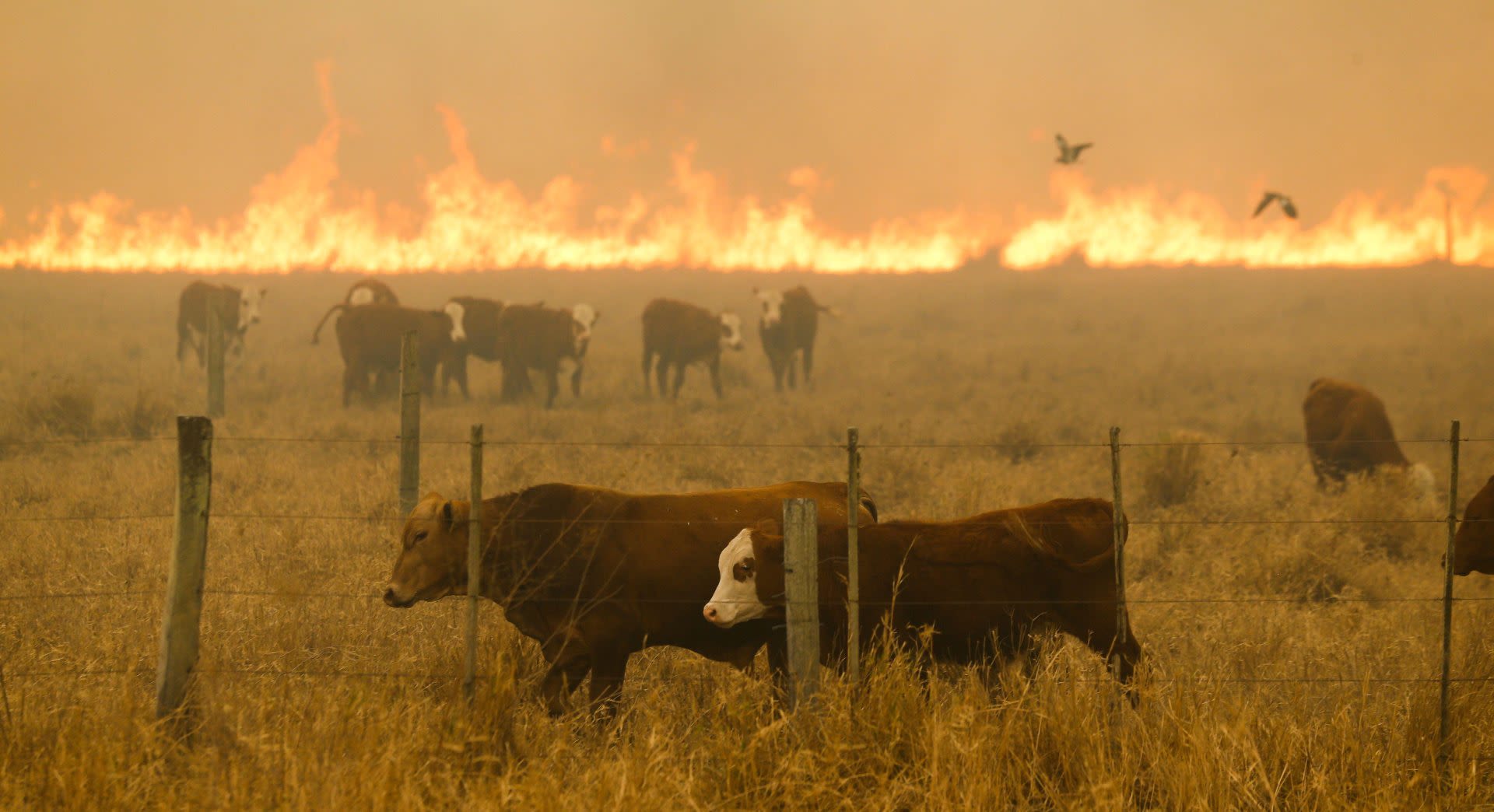
- State of Emergency announced as fires rage across Paraguay, with 50,000 hectares destroyed in the Chaco
- Earthsight has identified around 300 fire hotspots within three cattle ranches violating an indigenous reserve (PNCAT) that feed into the leather supply chains of European car giants
- More than 200 of these occurred in mid-July and mid-October at the ranch of Caucasian SA; a firm known to supply facilities in BMW's leather supply chain.
- Yaguarete Pora and Chortitzer, ranches tied to the leather supply of BMW and Jaguar Land Rover respectively, have also been on fire
- Nearly 90 per cent of all PNCAT fires are in areas Earthsight found were illegally cleared since 2018
Paraguay is on fire.
President Mario Abdo Benitez declared a state of emergency on 1 October as fires raged across the country, including near the capital Asuncion. The government reported that 50,000 hectares (ha) of the Chaco region in the country’s north was destroyed.
The presidential announcement came just a day after Earthsight published Grand Theft Chaco; a report detailing how massive legal and illegal deforestation of Chaco forests underpins Paraguay’s burgeoning cattle ranching sector.
The report focused on illegal deforestation in cattle ranches inside the forest reserve of the Ayoreo Totobiegosode, the last uncontacted peoples in the Americas outside of the Amazon. Earthsight documented how hides from cattle grazed in the reserve (known as PNCAT) enter the leather supply chains of some of Europe’s leading luxury car firms, including BMW and Jaguar Land Rover.
On 3 October, Paraguay’s Volunteer Fire Department said they suspected 90 per cent of the blazes were lit intentionally for profit. Suspicions of arson were echoed by Paraguay’s Minister for the National Emergency Secretariat, Joaquín Roa, who has charged the office of the prosecutor to coordinate investigations into whether the fires were started intentionally.
Burning crop residues after harvesting and torching dry grasslands to prompt new growth in cattle pasture is a common activity across Latin America. Paraguay is no exception.
As news of the government’s investigation into possible arson in agribusiness areas broke, Earthsight checked to see if three ranches operating illegally in PNCAT and linked to BMW and Jaguar Land Rover suppliers were affected.
Unsurprisingly, they were.
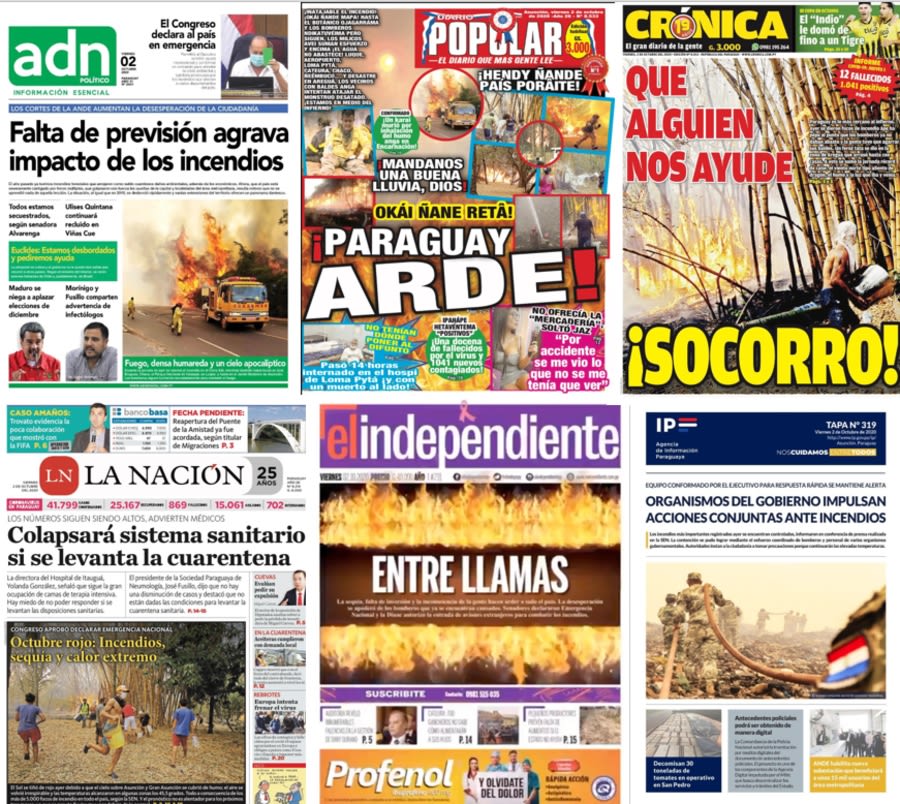
Front pages of Paraguay's newspapers on 2 October depict the worsening fires crisis © Earthsight
Front pages of Paraguay's newspapers on 2 October depict the worsening fires crisis © Earthsight
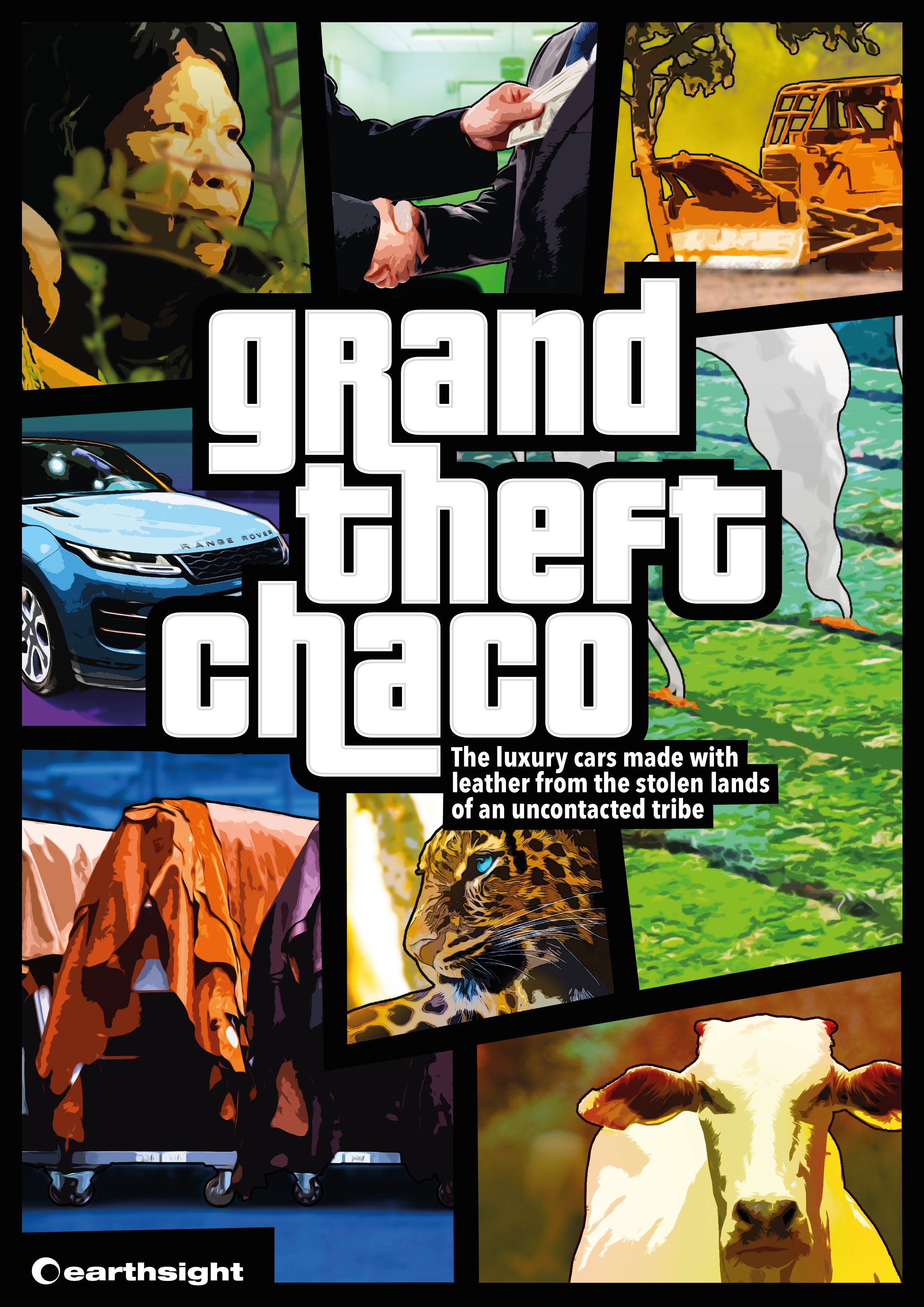
© Earthsight
© Earthsight
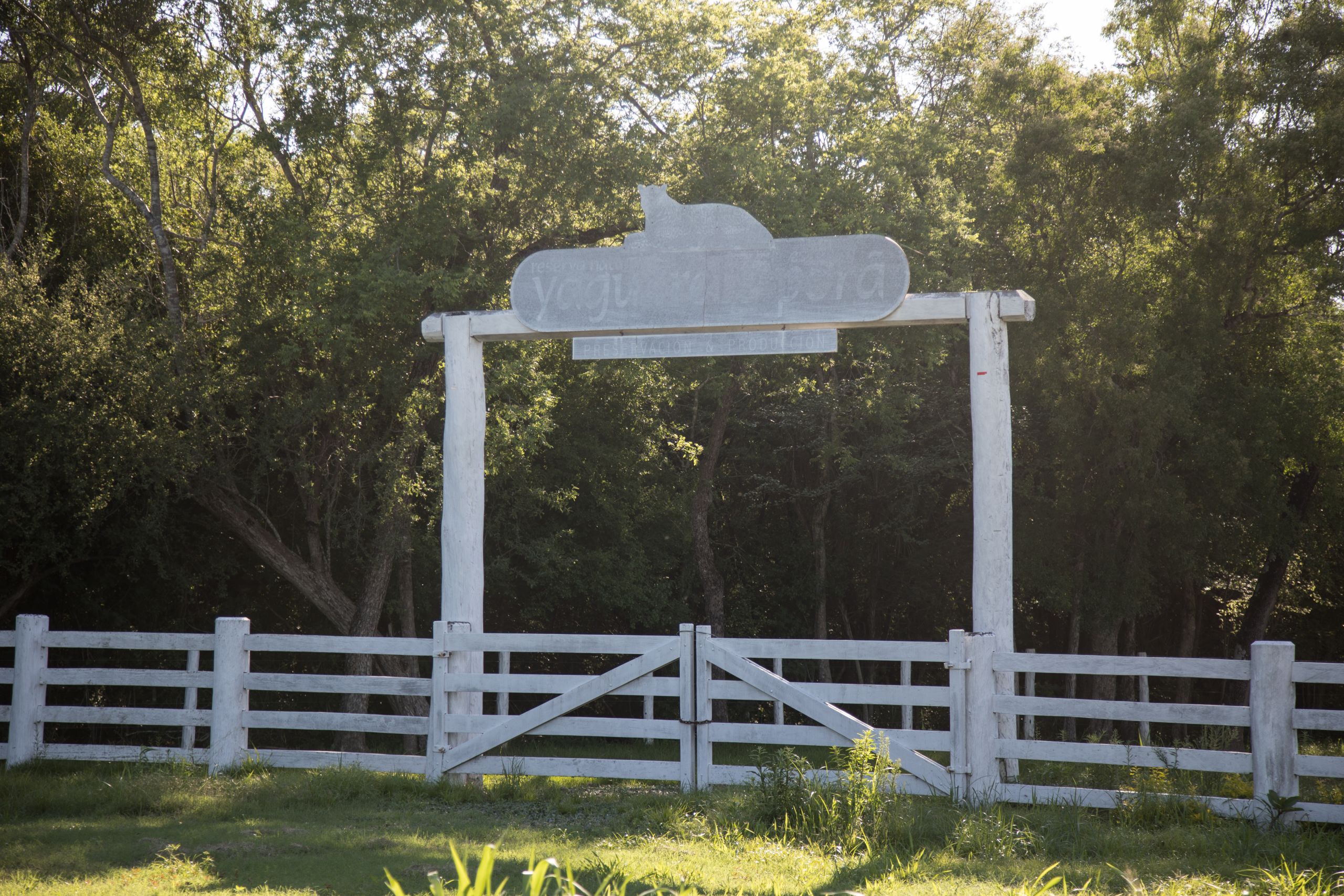
Entrance to the Yaguarete Pora ranch, the Brazilian firm Earthsight linked to illegal clearances in the Paraguayan Chaco. © Earthsight
Entrance to the Yaguarete Pora ranch, the Brazilian firm Earthsight linked to illegal clearances in the Paraguayan Chaco. © Earthsight
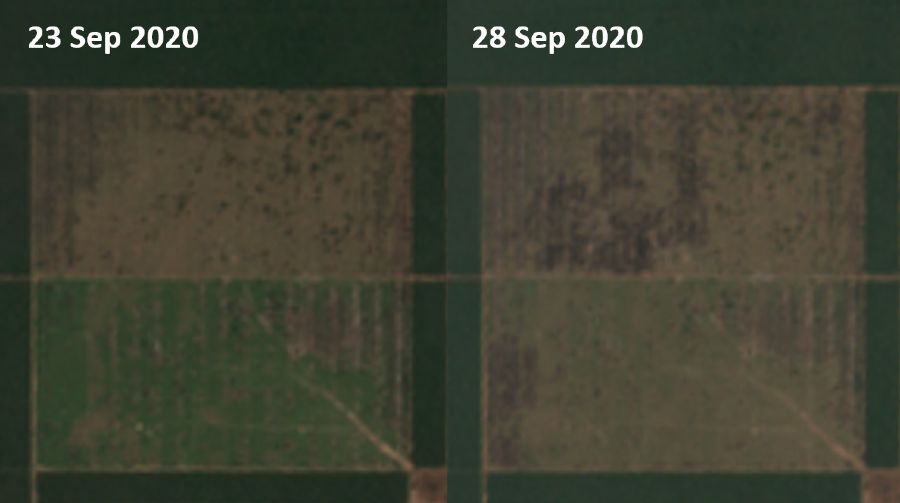
A 1 sq km ranching quadrant in Yaguarete Pora shows the emergence of burn scars between 23 and 28 September 2020. © GFW
A 1 sq km ranching quadrant in Yaguarete Pora shows the emergence of burn scars between 23 and 28 September 2020. © GFW
Data accessed via Global Forest Watch (GFW) shows 276 fire VIIR hotspots were identified within the protected indigenous reserve during the last week of September. Of those, 91 were detected in the ranch of Yaguarete Pora, a property featuring centrally in our Grand Theft Chaco report due to the highly irregular permitting procedures underpinning all historical forest clearances within it.
Earthsight’s comparison of satellite images taken between 23 and 28 September show burn scars (freshly burned areas) measuring 12.7ha - equivalent to 18 football pitches - in just a one square kilometre quadrant within Yaguarete Pora’s farm. The wider hotspots however indicate this is just one of very many more areas burned during the last month inside the property.
Cattle from Brazilian-owned Yaguarete are sold to the slaughterhouse of Frigorifico Concepcion, which BMW has confirmed as a source of hides via its Italian supplier Pasubio.
Ranchers in Paraguay are permitted to use fire, but only with a special permit and under very carefully prescribed conditions, as regulated under Law 4014. But even if the fires in Yaguarete Pora, which occurred in areas originally cleared of forest some years ago, were legal, other fires Earthsight has found within PNCAT are much more suspect.
GFW shows nearly 200 further fire hotspots located within PNCAT since the end of September.
More than 150 of these, covering roughly a 30 square kilometre area, were recorded on 14, 15 and 16 October within the boundary of Caucasian SA, another of the ranching firms supplying facilities in BMW's leather supply chain.
These fires occurred within the part of Caucasian’s ranch which Earthsight’s report found had been cleared illegally after the February 2018 suspension of all land use change plans within PNCAT by Paraguay’s forestry institute, Infona.
Satellite images from 14 October show a billowing smoke trail stretching 80km south from the fire areas.
It seems unlikely that Caucasian could have legitimately obtained the necessary permission to carry out these October burns if the clearance itself was illegal, having occurred after Infona’s resolution unequivocally banning all clearance within PNCAT.
Though ranchers typically use fire either to burn the bulldozed remnants of forest or remove scrub regrowth in patches of forest developed for pasture, many of the hotspots in Caucasian’s property also appeared in forest areas outside of previously cleared land – indicating either the accidental or intentional use of fire beyond established pasture.
Imagery from 18 October shows the extensive burn scars associated with these fires, and that they spread into remaining forest in the property.
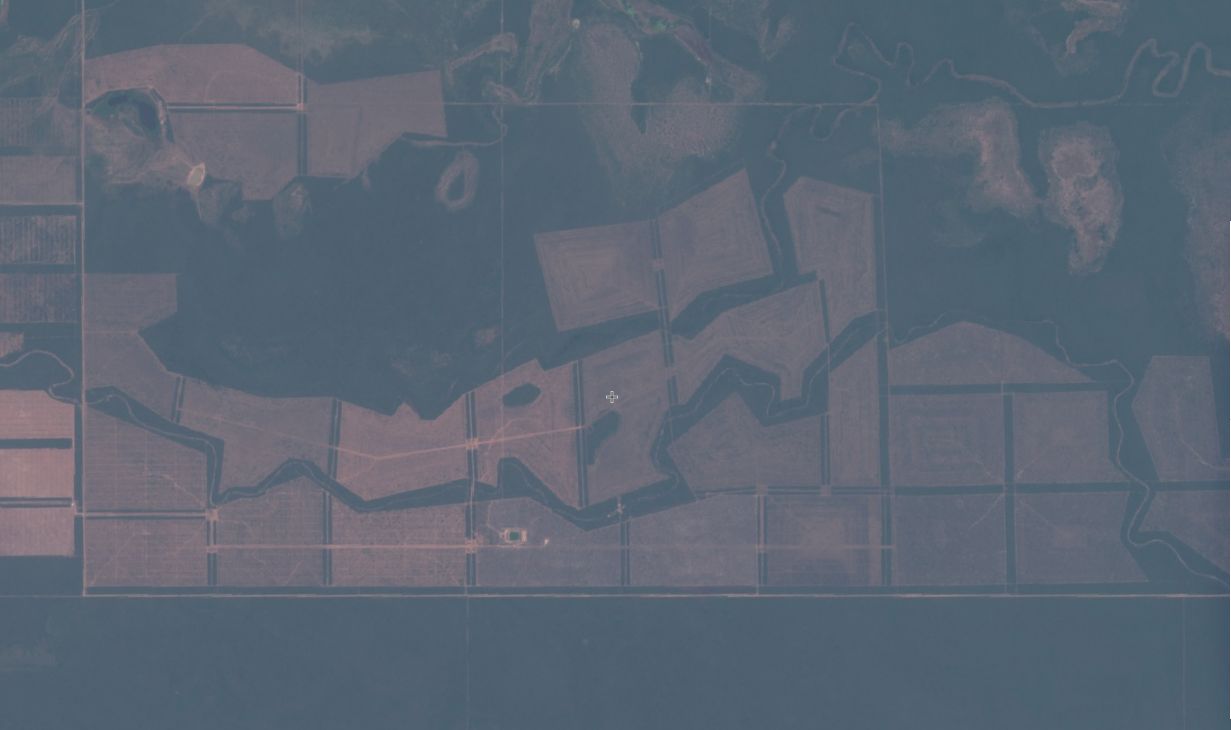
Illegally cleared portion of Caucasian SA’s ranch within PNCAT, in 8 October Sentinel image. © GFW
Illegally cleared portion of Caucasian SA’s ranch within PNCAT, in 8 October Sentinel image. © GFW
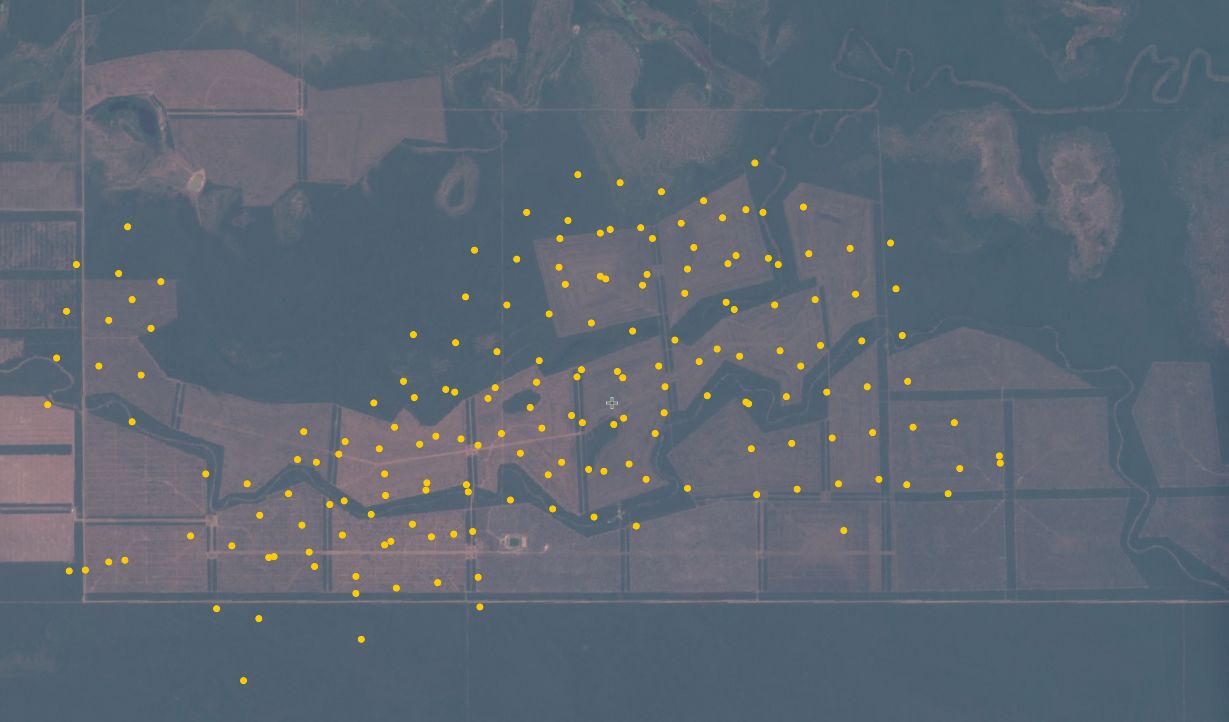
VIIR fire hotspots on illegally deforested land in Caucasian SA detected from 14-16 October. © GFW
VIIR fire hotspots on illegally deforested land in Caucasian SA detected from 14-16 October. © GFW
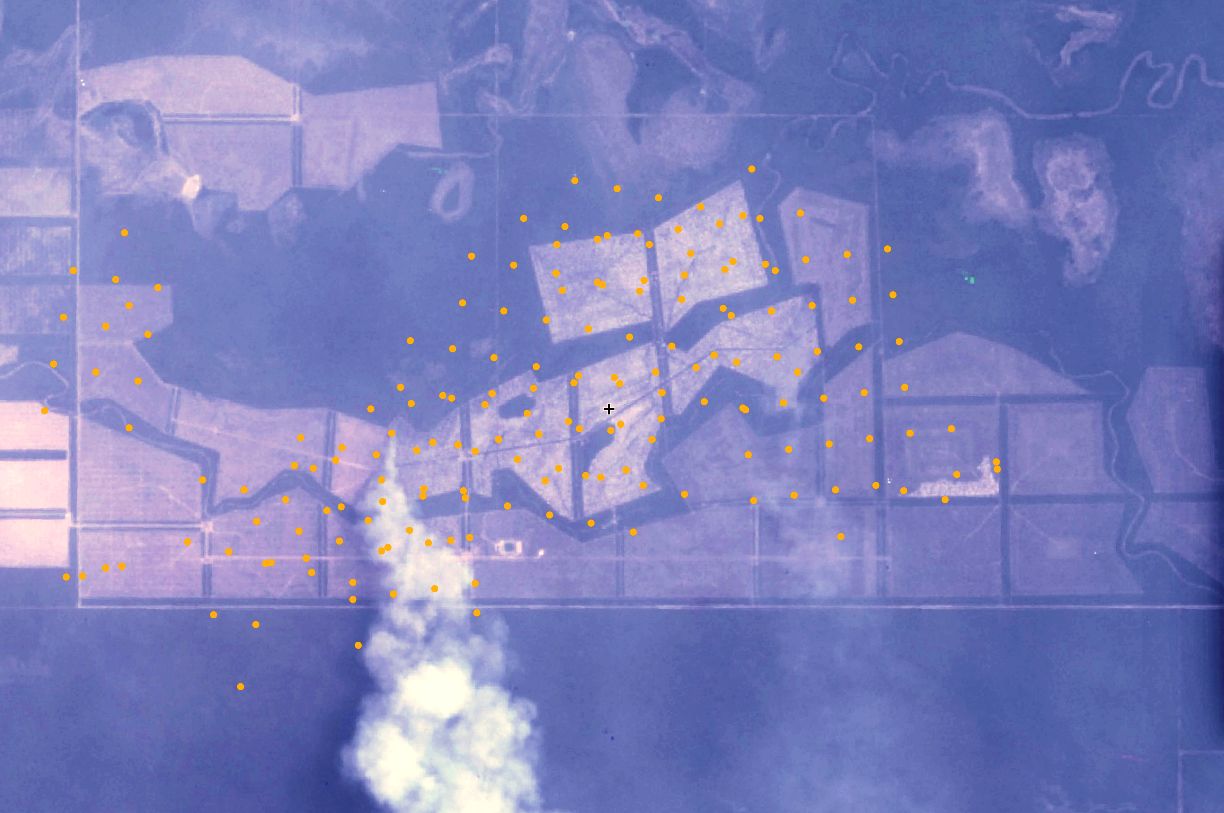
Smoke trail, which stretched 80km, is visible from the fires in 14 October Landsat 8 image. © GFW
Smoke trail, which stretched 80km, is visible from the fires in 14 October Landsat 8 image. © GFW
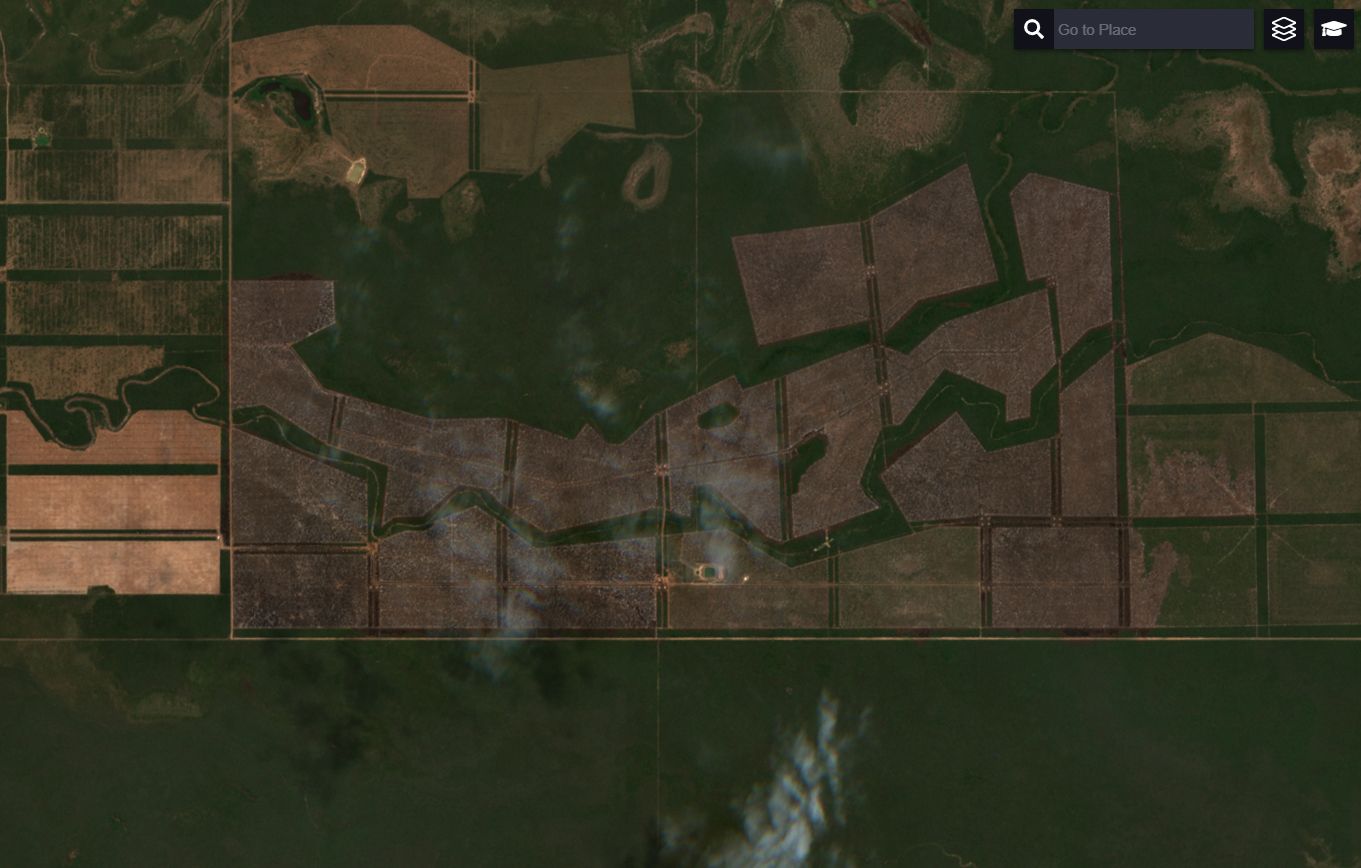
Burn scars captured on 18 October Sentinel image, evidencing impacts of fire hotspots detected days earlier. © EO Browser
Burn scars captured on 18 October Sentinel image, evidencing impacts of fire hotspots detected days earlier. © EO Browser
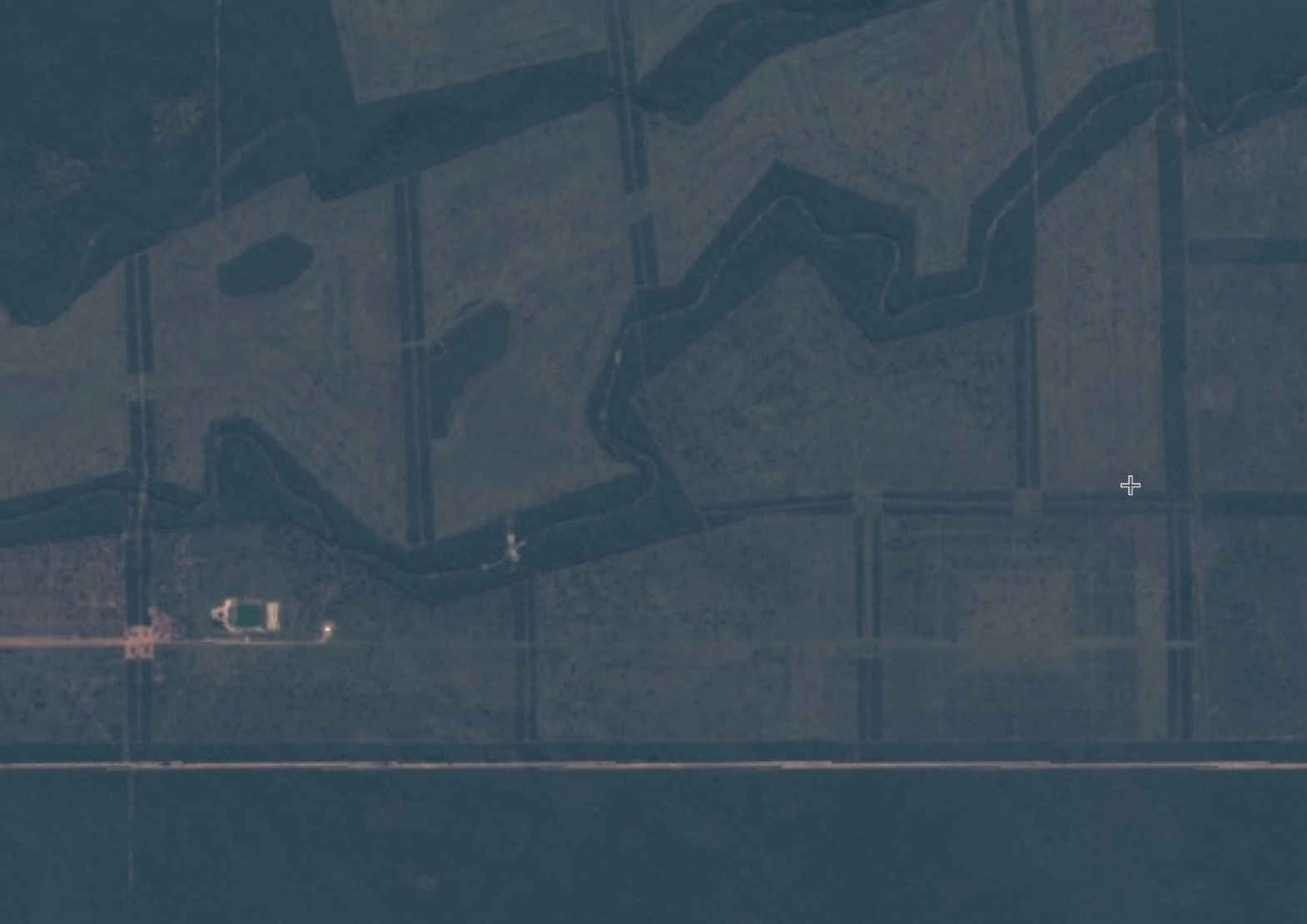
15 July Sentinel 2b image shows no fire hotspots or burn scars on illegally deforested sections of Caucasian SA. © GFW
15 July Sentinel 2b image shows no fire hotspots or burn scars on illegally deforested sections of Caucasian SA. © GFW
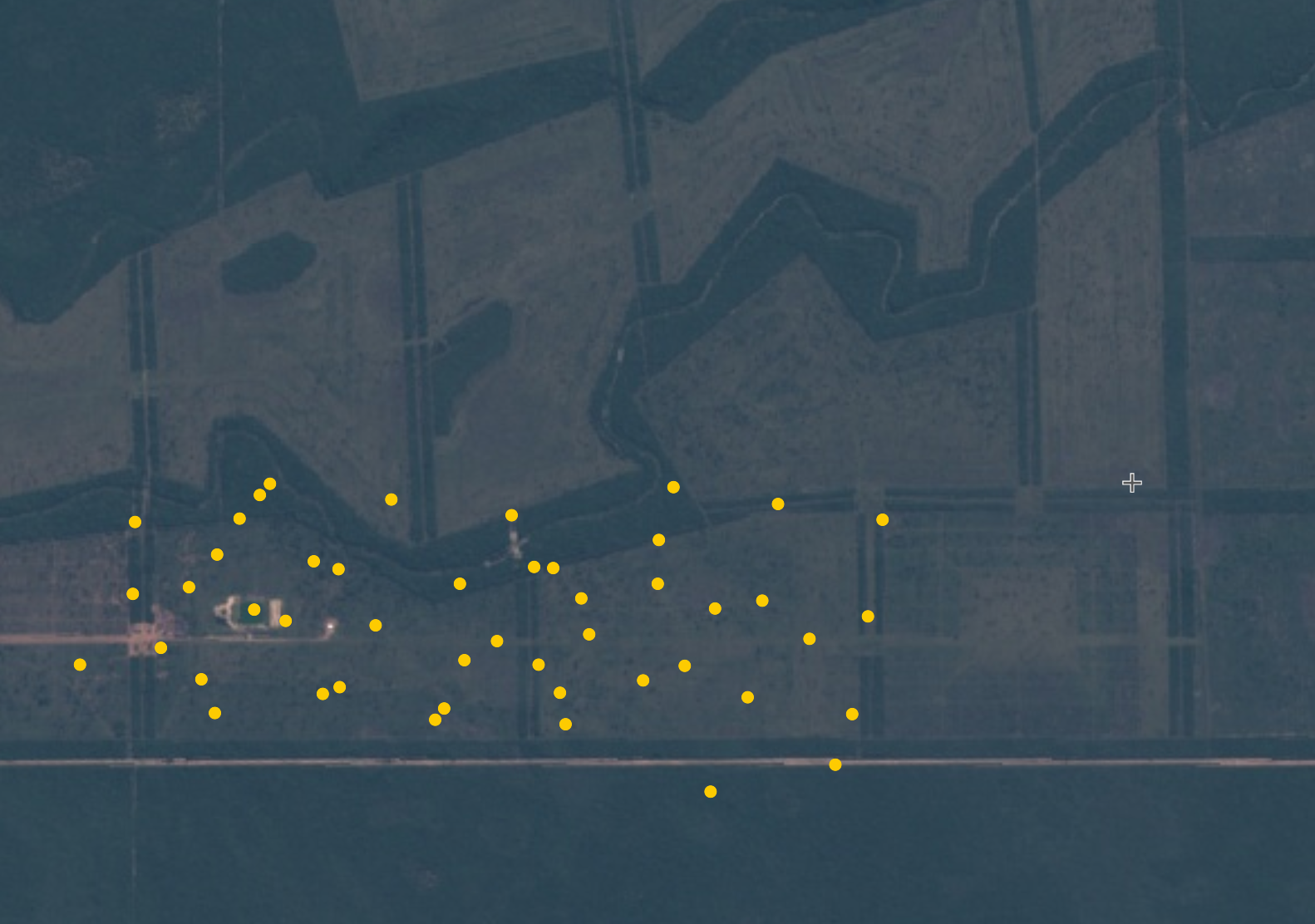
VIIR hotspots from 18-19 July show nearly 50 fires at the Caucasian property and two outside permitted areas © GFW
VIIR hotspots from 18-19 July show nearly 50 fires at the Caucasian property and two outside permitted areas © GFW
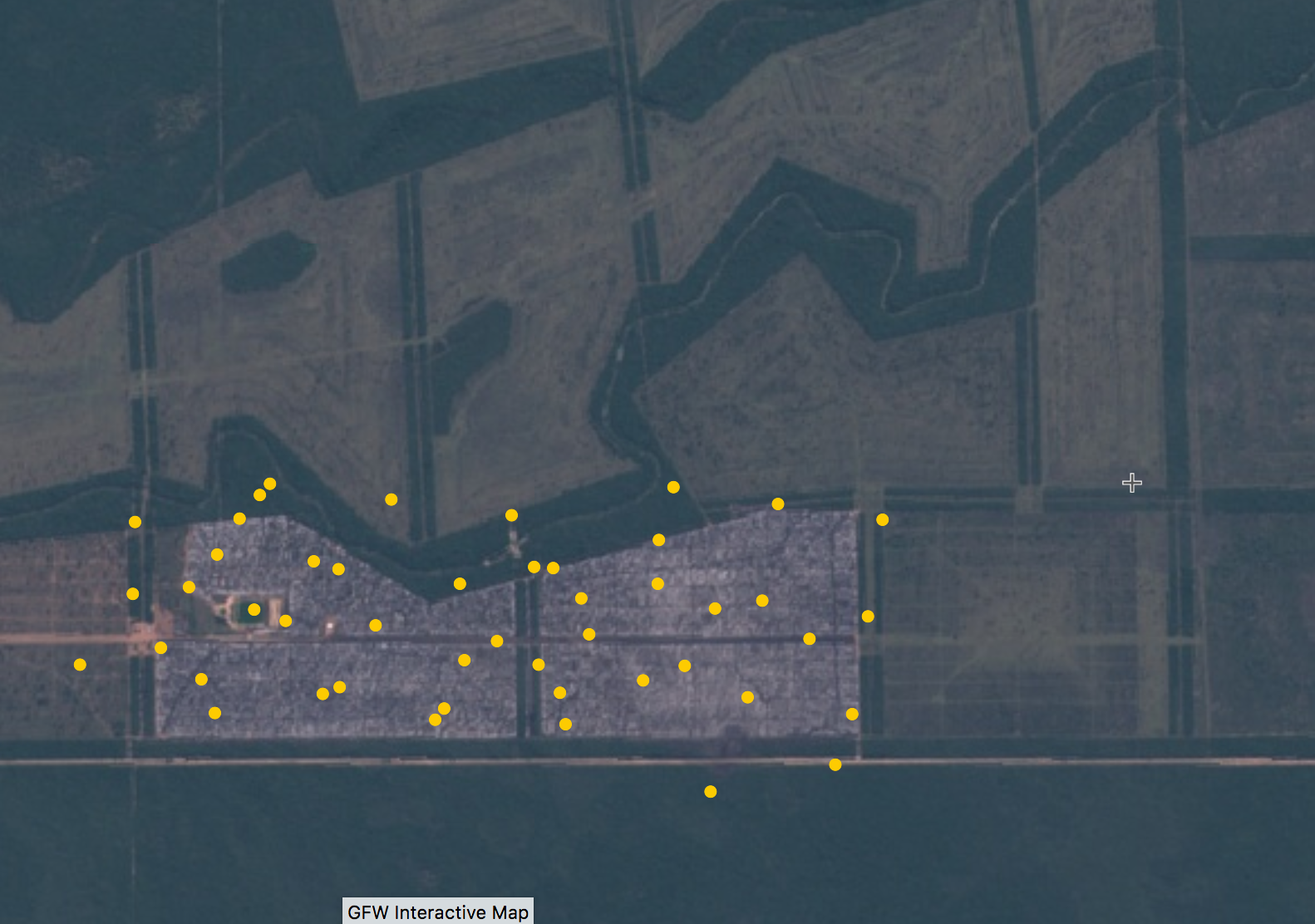
Sentinel 2a image from 20 July shows burn scars on illegally deforested areas of Caucasian SA. © GFW
Sentinel 2a image from 20 July shows burn scars on illegally deforested areas of Caucasian SA. © GFW
But October was just the latest spate of fires on illegally cleared land in Caucasian’s ranch.
Satellite imagery from 15 and 20 July show burn scars covering roughly two square kilometres of the ranch, resulting from nearly 50 additional fires detected as VIIR hotspots on 18 and 19 July exclusively in these illegally deforested areas of the Brazilian-owned ranch.
Closer examination of the July satellite images also suggests that legal requirements to carefully restrict fires to intended areas were breached, with burn scars spreading outside pasture areas into surrounding intact forest, and across the boundary of Caucasian’s ranch into that of Yaguarete Pora to the south (see yellow outliers in image).
Cows from Caucasian SA are sold to the Minerva-owned FrigoAthena slaughterhouse, which has its hides processed at the tanneries Lecom and Concepcion before being returned to Minerva’s leather arm Frigomerc, for export.
A portion of FrigoAthena’s hides are also retained by Lecom and Concepcion for export themselves. BMW buys wet blue leather from all three leather exporters, via Pasubio in Italy.
While BMW remains reticent to admit the problems in Paraguay exposed in Grand Theft Chaco affect its leather supply chain, in response to the report the company nonetheless announced it will drop raw leather from Latin America in the medium term.
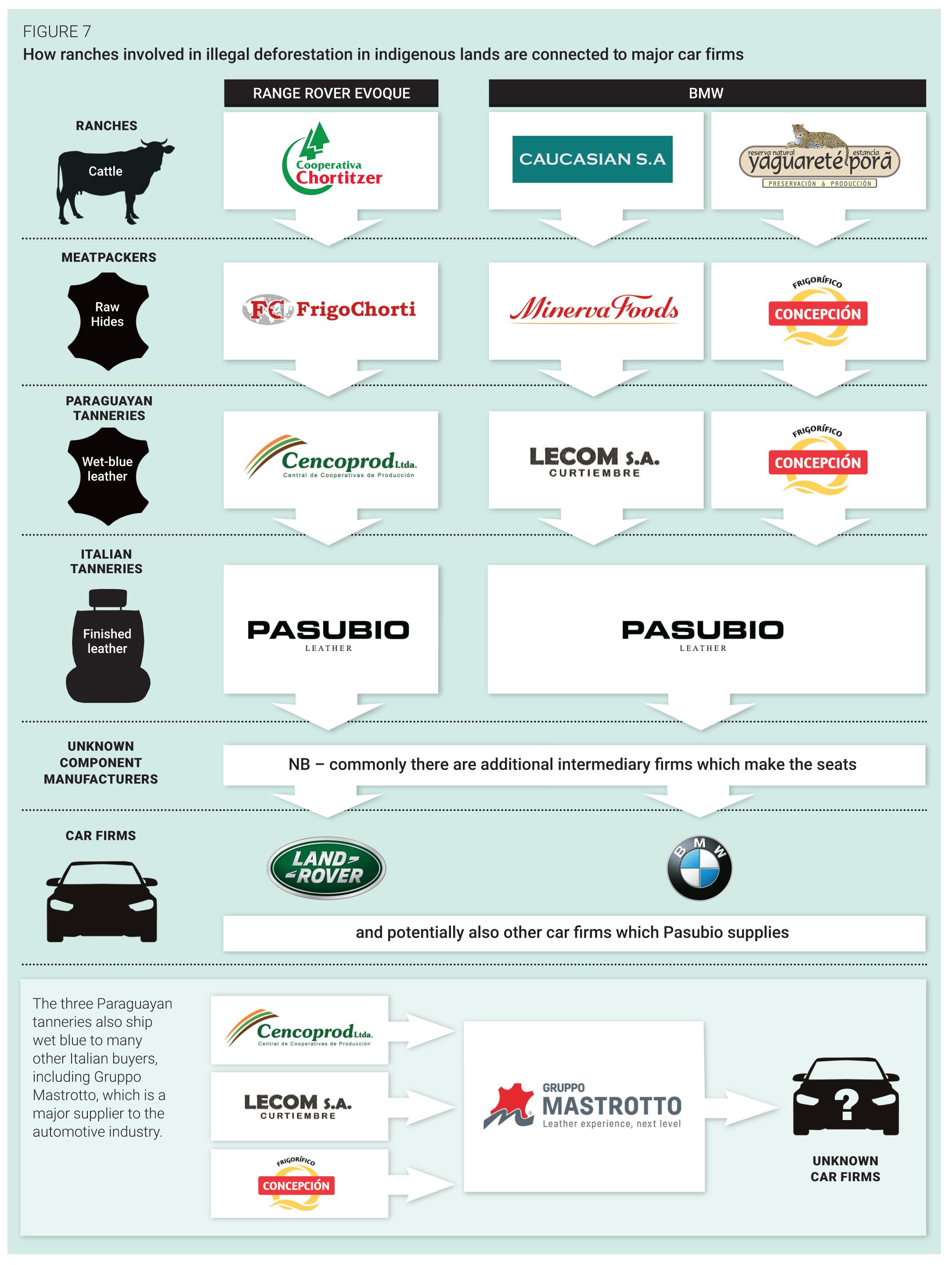
© Earthsight
© Earthsight
Perhaps Paraguay’s prosecutor’s office might now investigate whether the burning occurring in ranches in PNCAT linked to suppliers for the German automotive giant were legitimately authorised by local authorities as required under Law 4014.
Although Caucasian may have been authorised to use fire in pasture management as required under Law 4014, the pastures in which it has used fire were created illegally in the first place, and the signs it lost control of the fires are clear.
A further four fire hotspots were also detected on 9 October within the property registered to the Mennonite cooperative Chortitzer, located in PNCAT’s north-western corner, again within pastures cleared illegally after February 2018. Grand Theft Chaco uncovered how cow hides from Chortitzer, via its slaughterhouse business FrigoChorti, enter the leather supply chain of Jaguar Land Rover (JLR) through the Paraguayan tannery giant Cencoprod. JLR has launched an investigation into its supply chain in response to Earthsight’s findings.
From 8 to 16 October, 89 percent of the PNCAT fire hotspots were in areas Earthsight found were illegally cleared in 2018 and 2019 by the ranches Caucasian and Chortitzer that Grand Theft Chaco revealed as supplying facilities in the leather supply chains of BMW and JLR.
Although the fires in Chortitzer appear to have spread into it from inadequately controlled burns detected on 8 October in its neighbouring ranch to the west, just outside of PNCAT, they appear symptomatic of how Paraguay’s law on fires and the widespread clearance of forest – both legal and illegal – is an environmental and governance catastrophe.
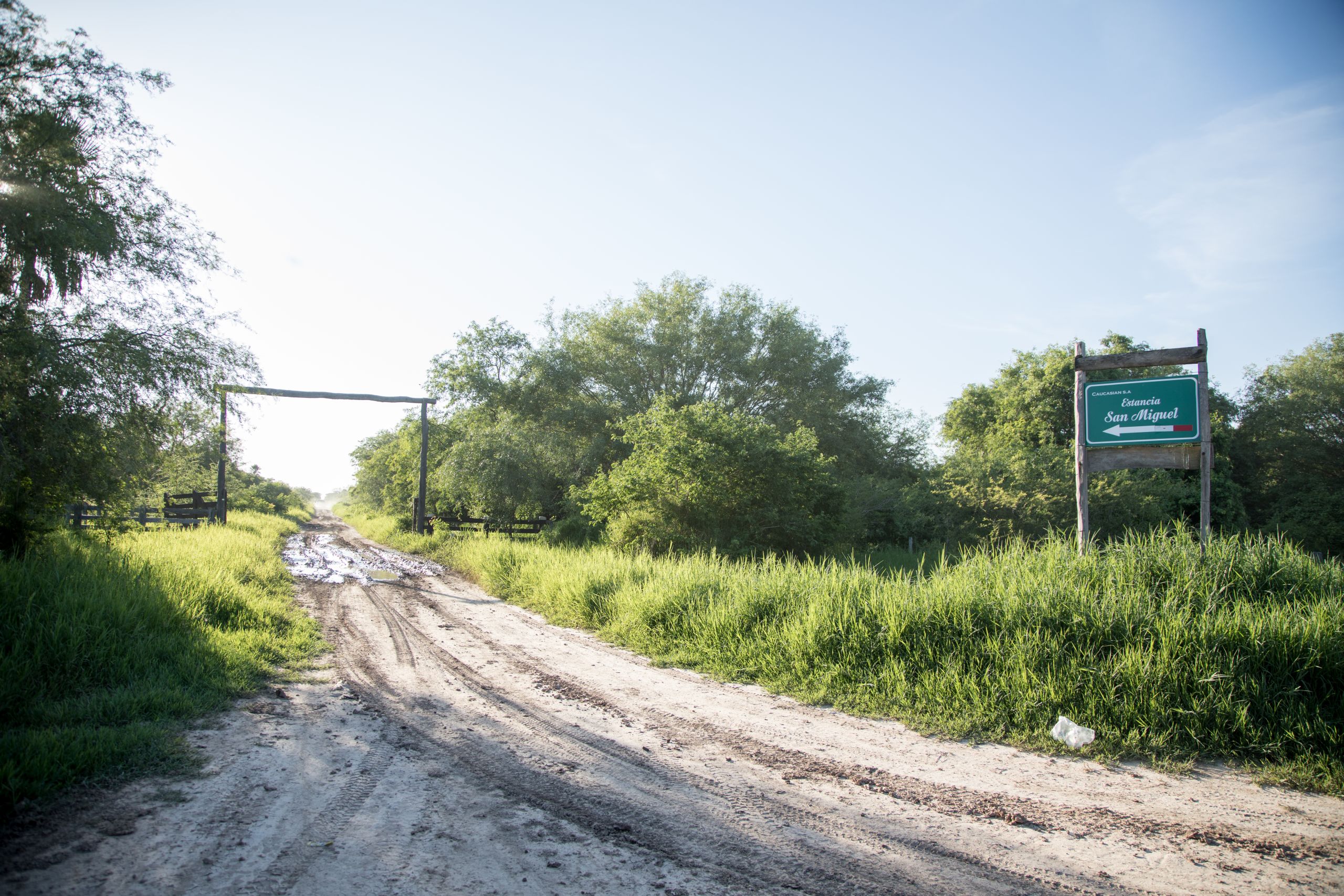
A cattle ranch belonging to Caucasian SA, the Brazilian firm known to supply facilities in BMW's leather supply chain. © Earthsight
A cattle ranch belonging to Caucasian SA, the Brazilian firm known to supply facilities in BMW's leather supply chain. © Earthsight
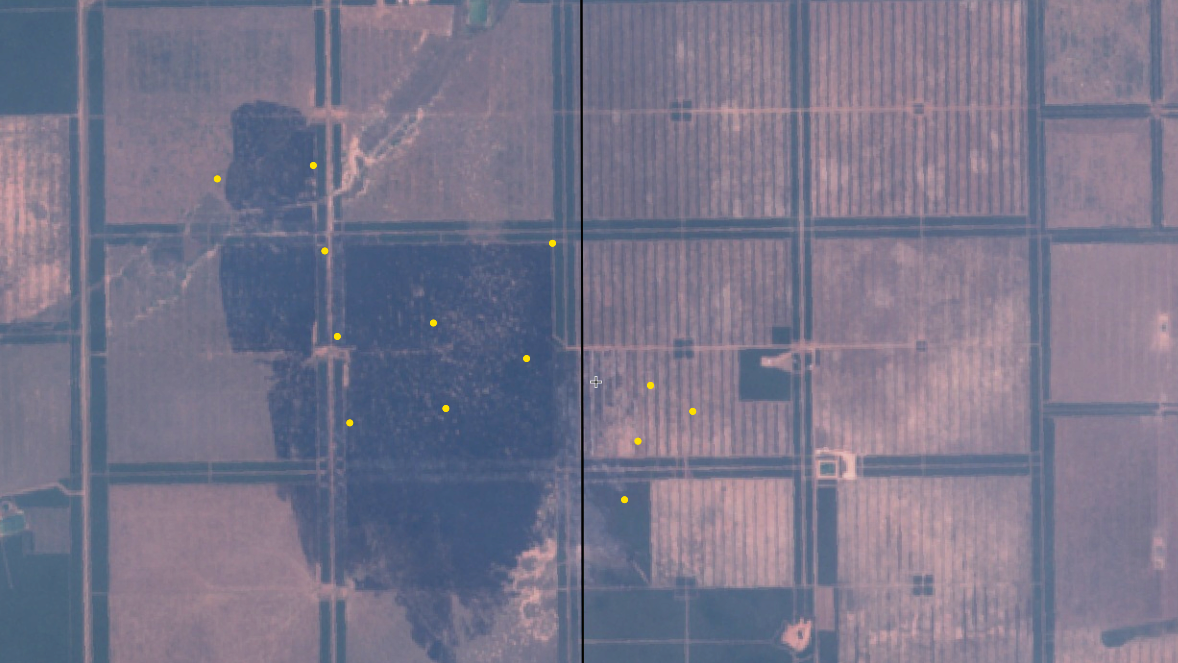
Fire hotspots on left of PNCAT boundary detected on 8 October and spread into Chortitzer's PNCAT area (right-hand side) on 9 October, Sentinel image from 11 October shows. © GFW
Fire hotspots on left of PNCAT boundary detected on 8 October and spread into Chortitzer's PNCAT area (right-hand side) on 9 October, Sentinel image from 11 October shows. © GFW
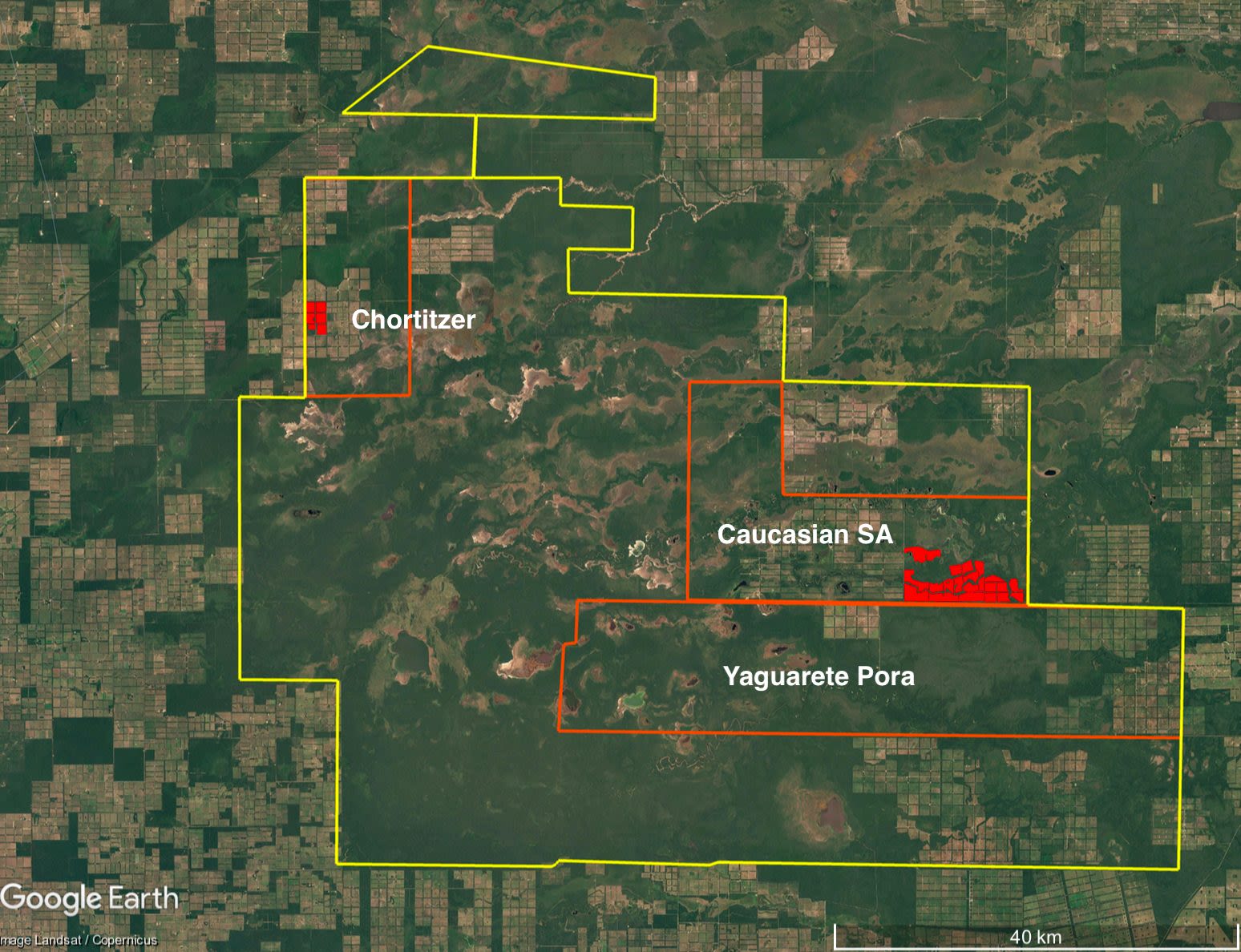
Cattle ranches within PNCAT. Highlighted areas in red denote illegal clearances which have taken place since the 2018 Infona ruling. © Google Earth / Earthsight
Cattle ranches within PNCAT. Highlighted areas in red denote illegal clearances which have taken place since the 2018 Infona ruling. © Google Earth / Earthsight
Perhaps the tragic fires crisis might also prompt prosecutors to seize on Earthsight’s report to investigate the illegal clearances inside the ranches of Caucasian SA and Chortitzer. Both sets of clearances are presumably detectable under the deforestation monitoring system Infona is developing with Global Forest Watch, and are clearly in violation of Infona’s February 2018 suspension of all land use plans within PNCAT.
Infona’s president, Cristina Goralewski, recently confirmed that fires were often connected to deforestation for cattle ranches, but that no one in Paraguay has ever been imprisoned by the prosecutor, even for illegal clearances.
“We have a case of a person who has deforested more than 1,000 hectares in San Pedro and is not imprisoned, that must be a prison, it is a very serious environmental crime. Unfortunately institutions such as Mades [Paraguay’s environment ministry] and Infona can only impose administrative fines from 100 to 10,000 times a daily wage and then the case goes to the Prosecutor's Office," she reportedly said.
As fires ripped through the Chaco and its communities in the late September, a recurrent theme in the #PrayForParaguay internet posts of terrified locals was that international attention and assistance was required to get government to do anything at all.
